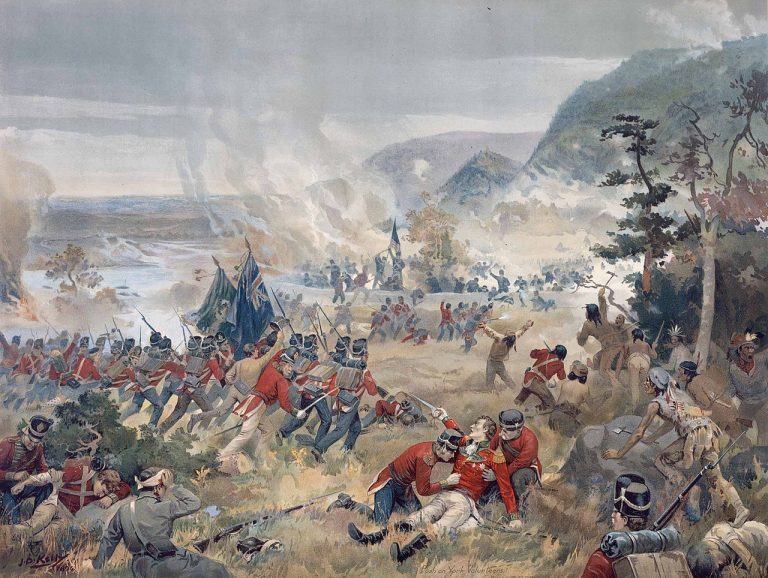Welcome to Tuesday Trivia! Where you can tackle questions on varying subjects about the city of Niagara Falls and surrounding region. We want to challenge your knowledge of our city with a series of multiple choice questions.
June 18th, 2024 is the 212th Anniversary
Today’s topic is Niagara and the War of 1812….let’s go!
Results
You are a total history buff!
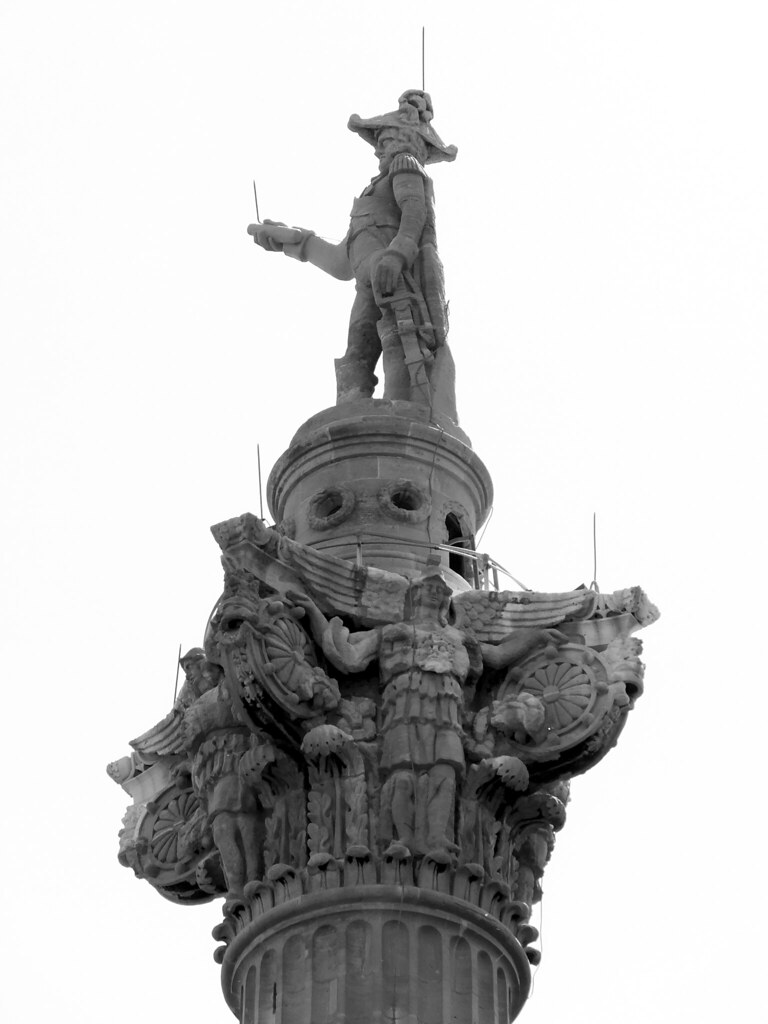
Keep battling on!
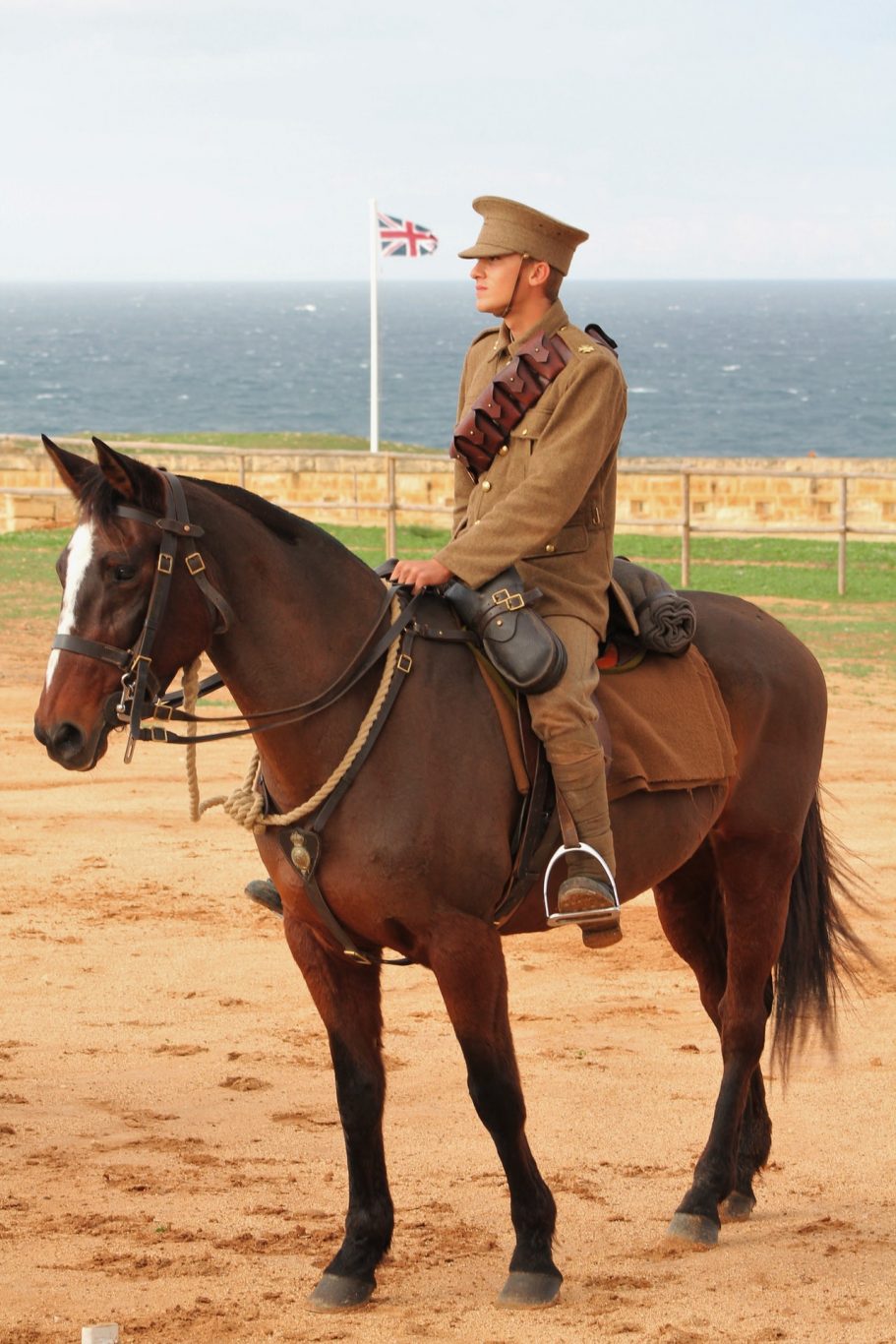
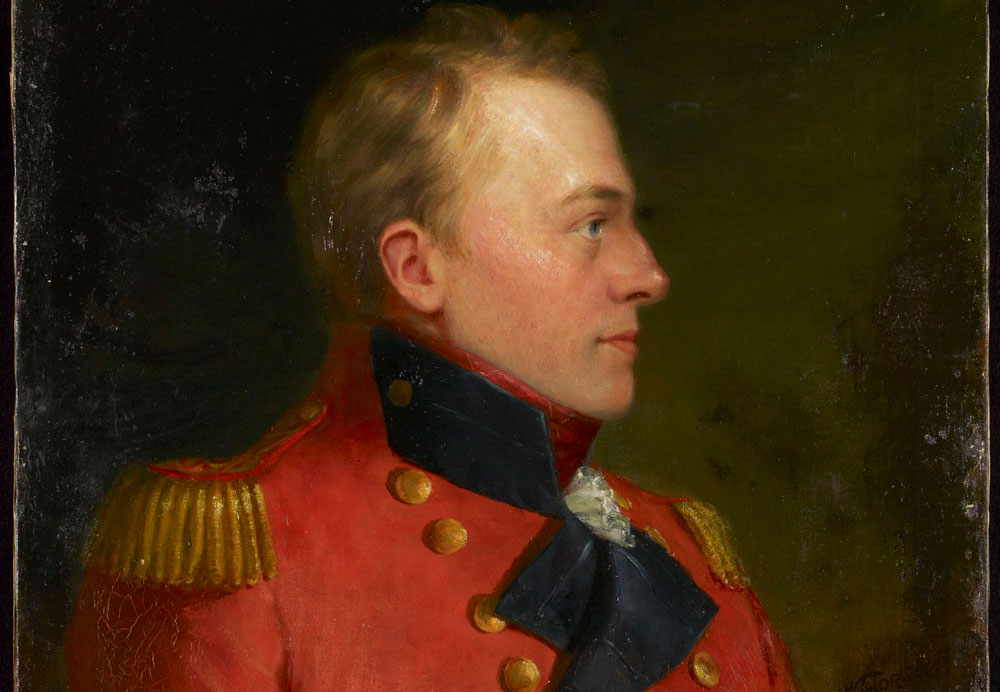
#1. Major General Isaac Brock was shot and killed at which battle in Niagara? ? Image Source: Library and Archives Canada/MIKAN 2890414
Major General Isaac Brock found himself in the middle of the battle as the American infantry led by Captain John Wood had been able to sneak up the escarpment to near the top of Queenston Heights. However, during this charge in an attempt to retake the Redan Battery at Queenston Heights, Major General Isaac Brock was shot by an American marksman who had hidden behind a tree. Brock was shot in the chest with a musket ball at close range. He fell to the ground mortally wounded on October 13, 1812.
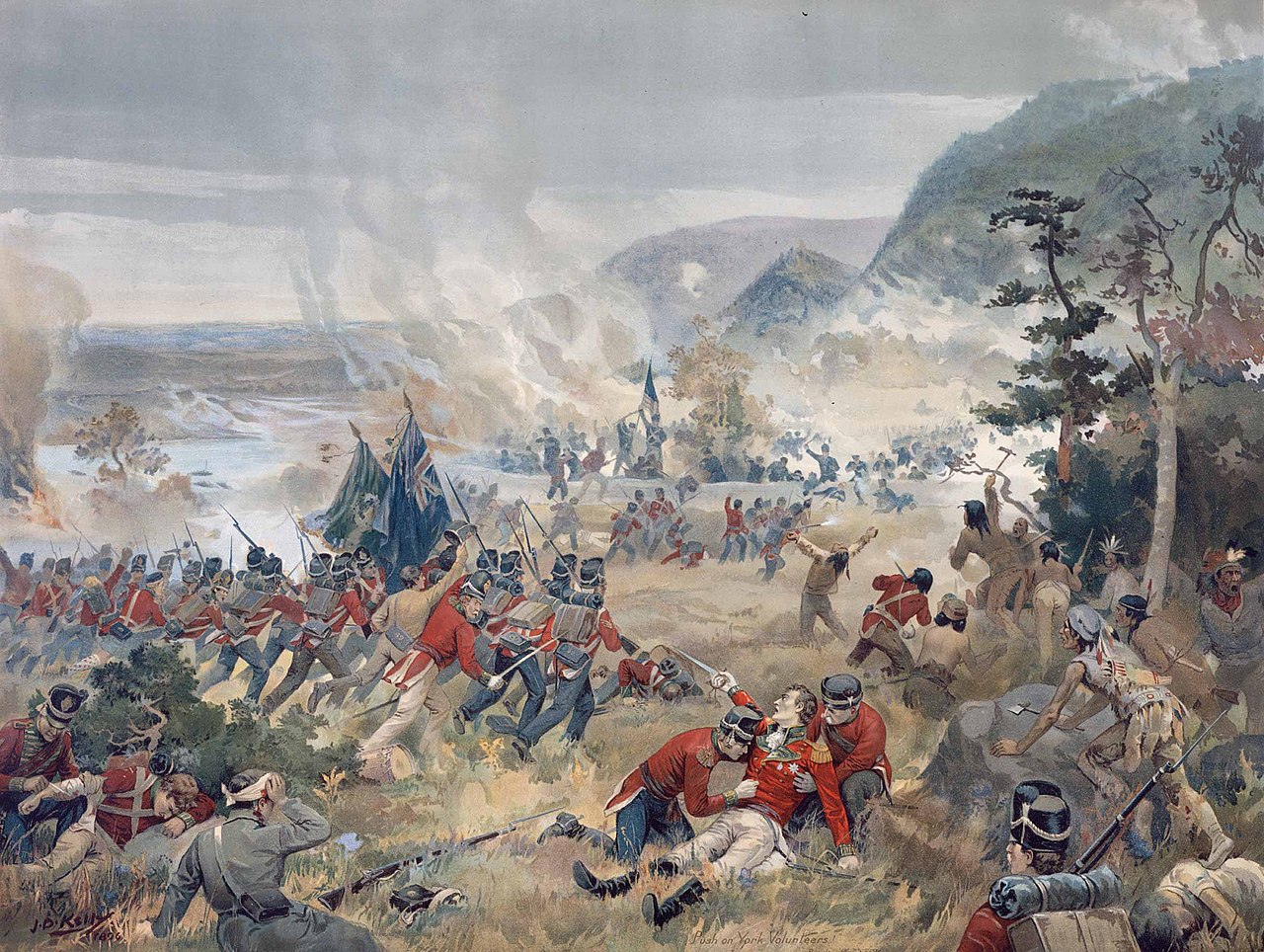
#2. Who was the well-known Canadian Heroine of the War of 1812? ? John David Kelly (1862 - 1958) published 1896 - Library & Archives Canada
While all of these women were considered heroine’s within the War of 1812, it was Laura Secord who became the well-known Canadian Heroine of the War of 1812. Secord’s husband, James Secord, served in the British Army, and was wounded at the Battle of Queenston Heights. On the evening of June 21, 1813, several American officers forced their way into the Secord home and while her husband lay wounded, they ordered Laura to serve them dinner. As the evening wore on, Secord overheard them boasting of their plans to crush the remaining British resistance in the area. Colonel Boerstler, head of the forces at Queenston Heights revealed plans to attack the British at Beaver Dams. Secord then walked for 18 hours and 20 miles to warn the British troops of the impending attack. She arrived on June 22, 1813 to relay her information and two days later, on June 24, 1813, British and Native troops intercepted the Americans and forced their surrender at the Battle of Beaver Dams.
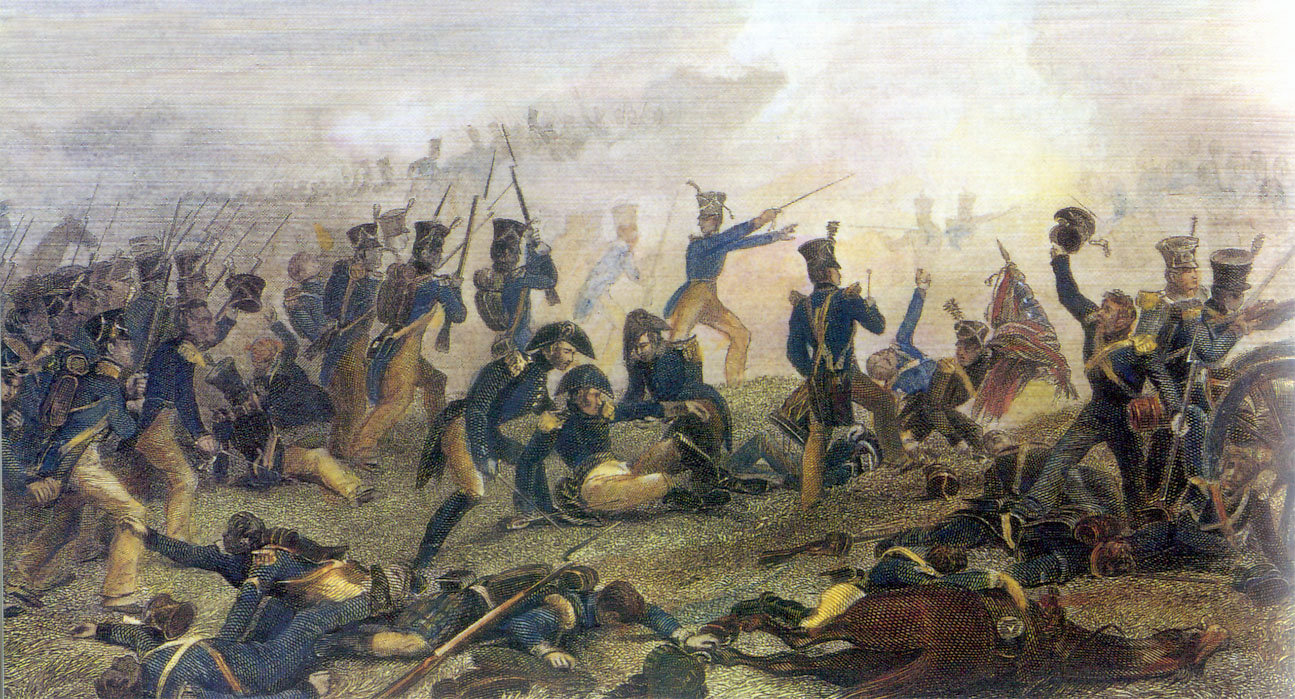
#3. The “largest and bloodiest battle” of 1812 was where? ? Six Nations Legacy Consortium Collection. 1859 by Alonzo Chappel, Artist
The Battle of Lundy’s Lane was one of the deadliest battles ever fought on Canadian soil, with high casualties suffered on both sides. Nearly 1,800 men were killed, wounded or missing during the battle. As the Americans surged forward, the British army – which included the Canadian regular troops, militia and First Nations allies – fought valiantly to hold their position to prevent the American troops from moving further north. The Battle of Lundy’s Lane is sometimes referred to as the Battle of Niagara Falls since the fighting occurred just two kilometres west of the falls. Today, the battlegrounds at Lundy’s Lane are known as Drummond Hill, with the Drummond Hill Cemetery as the final resting place for many of the battle’s victims.
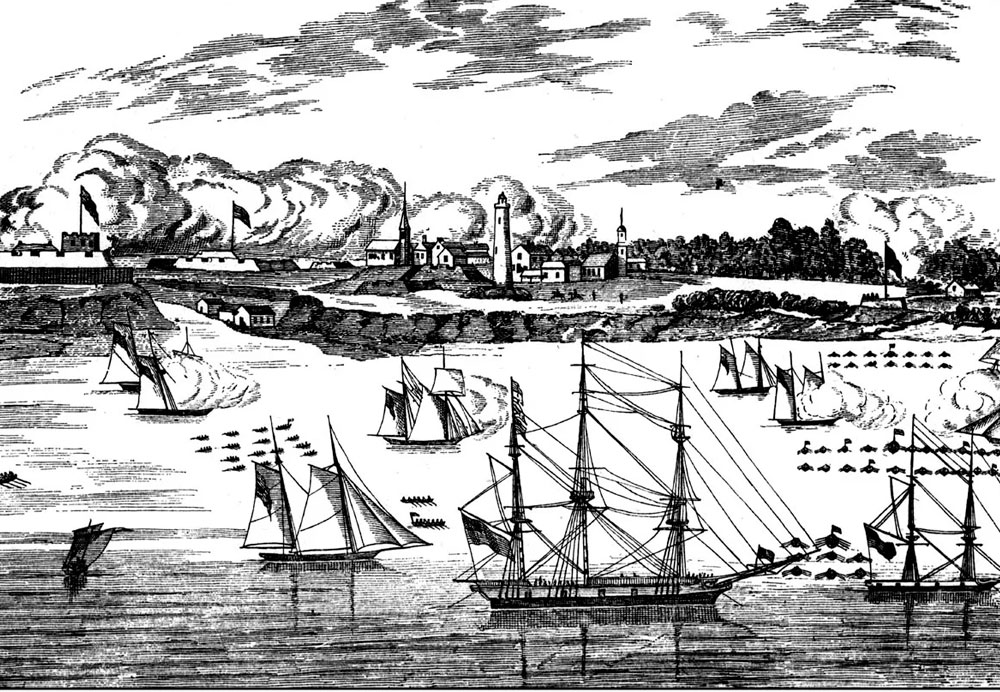
#4. Where was the first American victory on the Niagara Front during the War of 1812? ? Image Source: Pickwell Bros., Book and Job Printers 1896 By Cruikshank, Ernest. Capt. 44th Battalion
On May 25-27, 1813, the Battle of Fort George was the first American victory on the Niagara Front during the War of 1812. General Henry Dearborn’s planned the attack on York first (Toronto), which was succeeded. He then wished to follow an attack on Fort George, the British fort at the northern end of the Niagara River, and finally by an attack on Kingston, the main British naval base on Lake Ontario. He had between 4000-5000 men to make his assault after the attack on York, leaving British Commander General John Vincent outnumbered and with little chance. Under his direct command at Fort George there were 1,000 men from the 8th and 9th Regiments of Foot, the Royal Newfoundland Regiment and the Glengarry Light Infantry Fencibles, supported by 300 militia. The American attack began on May 25th with a naval bombardment of Fort George. The wooden buildings inside the fort were set on fire. General Dearborn was ill on May 27th, and so Colonel Winfield Scott, his Adjutant General, took command of the landing. The British suffered 52 killed and 306 injured or missing. Vincent decided to abandon the fort and move out of range of the naval guns. The American forces used Fort George as a base to invade the rest of Upper Canada, but after seven months the fort was retaken in December by the British.

#5. How long was the War of 1812?
The war of 1812 lasted for three years and a few months. The United States declared war on Britain on June 19,1812. The Treaty of Ghent, signed on December 25, 1814, ended the War of 1812, but it wasn’t until January 8, 1815, at the Battle of New Orleans, that the last battle was fought.
Niagara War of 1812 sites and museums include:
- Battle Ground Hotel Museum
- 6151 Lundy’s Ln, Niagara Falls, ON L2G 1T4
- Chippawa Battlefield
- Niagara Pkwy, Niagara Falls, ON L2E 6S6
- Laura Secord House
- 29 Queenston St, Queenston, ON L2E 6T2
- Lundy’s Lane Battlefield (Drummond Hill Cemetery)
- 6115 Lundy’s Ln #6113, Niagara Falls, ON L2G 1T4
- Niagara Falls History Museum
- 5810 Ferry St, Niagara Falls, ON L2G 1S9
- Willoughby Historical Museum
- 5810 Ferry St, Niagara Falls, ON L2G 1S9
- Fort George National Historic Site
- 51 Queen’s Parade, Niagara-on-the-Lake, ON L0S 1J0
- Old Fort Niagara
- 102 Morrow Plaza, Youngstown, NY 14174-0169 USA
Keep up on Niagara events, activities, and things to do in this region by visiting our list of Niagara events happening throughout the year.














